December 3rd Scots Book of Days 1318 Battle of Dundalk
December 3 – 1318 Battle of Dundalk in Ireland.
 1575 Father John Gerard matriculates at Exeter College Oxford. John was the son of Sir Thomas Gerard of Bryn, near Ashton in Makerfield, Lancashire, who had been imprisoned in 1569 for plotting the rescue of Mary, Queen of Scots, from Tutbury Castle. Thomas’ release in 1571 may have been influenced by his cousin Sir Gilbert Gerard who was Attorney General at that time. (also family of the Virginia Jared(s), Jarrett, Garrard, Jarett, Gerrard, Gerald, and a dozen other variant spellings.) SIR THOMAS GERARD (233B.39), b. 1488, of Kingsley & Bryn, county Lancaster, will dated 13 Sept. 1522, slain fighting Scots at Berwick.upon.Tweed 7 Nov. 1523. (Referred to at the time as The Scotch War.) Exeter college Oxford chapel
1575 Father John Gerard matriculates at Exeter College Oxford. John was the son of Sir Thomas Gerard of Bryn, near Ashton in Makerfield, Lancashire, who had been imprisoned in 1569 for plotting the rescue of Mary, Queen of Scots, from Tutbury Castle. Thomas’ release in 1571 may have been influenced by his cousin Sir Gilbert Gerard who was Attorney General at that time. (also family of the Virginia Jared(s), Jarrett, Garrard, Jarett, Gerrard, Gerald, and a dozen other variant spellings.) SIR THOMAS GERARD (233B.39), b. 1488, of Kingsley & Bryn, county Lancaster, will dated 13 Sept. 1522, slain fighting Scots at Berwick.upon.Tweed 7 Nov. 1523. (Referred to at the time as The Scotch War.) Exeter college Oxford chapel
http://www.british-history.ac.uk/report.aspx?compid=91134#s1 Surrey lead Henry 8ths army to Berwick.
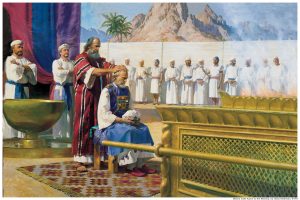 1557 Bond framed by which Reformers confederated under the name of the Congregation, each becoming bound to seek the destruction of the Romish Church. Wishart, Argyle, Glencairn, Lord James Stewart, John Erskine of Dun. The Congregationalists adopted the ancient title, tabernacle of the congregation, first recorded in Exodus, such as chapter 29:4
1557 Bond framed by which Reformers confederated under the name of the Congregation, each becoming bound to seek the destruction of the Romish Church. Wishart, Argyle, Glencairn, Lord James Stewart, John Erskine of Dun. The Congregationalists adopted the ancient title, tabernacle of the congregation, first recorded in Exodus, such as chapter 29:4
- 4 And Aaron and his sons thou shalt bring unto the door of the tabernacle of the congregation, and shalt wash them with water.
And again at Exodus 40:12
- And thou shalt bring Aaron and his sons unto the door of the tabernacle of the congregation, and wash them with water.
Thus distinguished the Church of Scotland for the next 500 years from the Anglican church to the south.
https://www.lds.org/scriptures/ot/ex/40.35?lang=eng. Modern portrayal of Moses giving Aaron the Priesthood before the door of the Tabernacle of the Congregation. The ancient imagery and terms described in the earliest books of Moses (Exodus, Leviticus) were adopted by the Lords of the Congregation, and the Bond of 1557.
1691 the Secretary intimated that Government was determined to destroy utterly some of the clans, in order to terrify the others, and he hoped that, by standing out and refusing to submit under the [King William 2nd] indemnity, the MacDonalds of Glencoe would fall into the net,– which meant that they would afford a pretext for their extirpation. [TG58-6 Sir Walter Scott].
 1694 The Darien Colony (isthmus between the Atlantic and Pacific) sometime in December. The two great continents of North and South America are joined together by an isthmus, or narrow tract of land, called Darien. This neck of land is not above a day’s journey in breadth, and [Sir Walter Scott’s Tales of a Grandfather-59-29] as it is washed by the Atlantic ocean on the eastern side, and the Great Pacific ocean on the west, the isthmus seemed designed by nature as a common centre for the commerce of the world. Paterson alleged that he had ascertained, that the isthmus had never been the property of Spain, but was still possessed by the original natives, a tribe of fierce and warlike Indians, who made war on the Spaniards. According to the law of nations, therefore, any state had a right of forming a settlement in Darien, providing the consent of the Indians was first obtained; nor could their doing so be justly made subject of challenge even by Spain, so extravagantly jealous of all interference with her South American provinces. That Europeans and Indians had no permanent settlements was true, as the Yellow fever, spread by the mosquito, prevented any permanent settlement until 1905.
1694 The Darien Colony (isthmus between the Atlantic and Pacific) sometime in December. The two great continents of North and South America are joined together by an isthmus, or narrow tract of land, called Darien. This neck of land is not above a day’s journey in breadth, and [Sir Walter Scott’s Tales of a Grandfather-59-29] as it is washed by the Atlantic ocean on the eastern side, and the Great Pacific ocean on the west, the isthmus seemed designed by nature as a common centre for the commerce of the world. Paterson alleged that he had ascertained, that the isthmus had never been the property of Spain, but was still possessed by the original natives, a tribe of fierce and warlike Indians, who made war on the Spaniards. According to the law of nations, therefore, any state had a right of forming a settlement in Darien, providing the consent of the Indians was first obtained; nor could their doing so be justly made subject of challenge even by Spain, so extravagantly jealous of all interference with her South American provinces. That Europeans and Indians had no permanent settlements was true, as the Yellow fever, spread by the mosquito, prevented any permanent settlement until 1905.
The Gulf of Darién (Spanish: Golfo de Darién), north of the isthmus of Darién in the Caribbean Sea.
This plan of a settlement, with so many advantages to recommend it, was proposed by Paterson to the merchants of Hamburgh, to the Dutch, and even to the Elector of Brandenburgh; but it was coldly received by all these states. The settlement plan would be warmly received by Scots circa 1699 and the French circa 1860s.
The Isthmus of Darien (later renamed Panama) was unsettled because it was infected with Yellow Fever, which killed off all settlers. Prevention and cure had to wait two centuries until Pasteur’s discovery of the microbial theory of disease, in the 1850’s, and Colonel Walter Reed’s clinical trial to prove the discovery of the fever’s transfer to humans by mosquitoes, and not by waste and discharge, in 1900. America accepted the challenge and Defeated Mosquitoes, and defeated the Yellow Jack.)
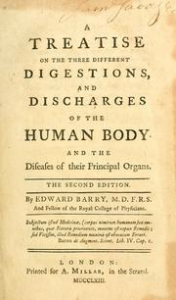 1763 sometime this year printed A Treatis on the Three different Digestions and Discharges of the Human Body and the Diseases of their Principal Organs. Etc. printed for Andrew Millar in the Stand.
1763 sometime this year printed A Treatis on the Three different Digestions and Discharges of the Human Body and the Diseases of their Principal Organs. Etc. printed for Andrew Millar in the Stand.
A Treatise etc. London Printed for A. Millar in the Strand. MDCCLXIII.
1812 Bonaparte quit the army, leaving Murat to order retreat from Russia. Tytler’s Britannica 270.
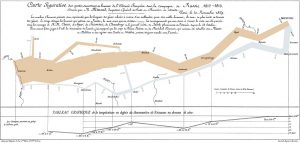 Carte Figurative of the infantry of the Armee Francoise and the lampagne de Russie 1812-1813, Paris 20 November 1869. The brown width represents the size of the army, beginning on the Kowno (Poland – entrance to Russia) then east to Moscow, far right, and retreat. Significant geographic sites are noted, and dates are given on the Y axis with ‘de la temperature en degres du thermometre de Reaumur au dessous de zero.’ (degrees below freezing).
Carte Figurative of the infantry of the Armee Francoise and the lampagne de Russie 1812-1813, Paris 20 November 1869. The brown width represents the size of the army, beginning on the Kowno (Poland – entrance to Russia) then east to Moscow, far right, and retreat. Significant geographic sites are noted, and dates are given on the Y axis with ‘de la temperature en degres du thermometre de Reaumur au dessous de zero.’ (degrees below freezing).
1818 Illinois becomes a state. Names with Scots locations include- [Wikipedia, Albany, Bannockburn, Bellmont, Bonnie, Broughton, Caledonia, Croft[, Dundee Township (Two Counties), Dunfermline, East Dundee, East Gillespie, Elgin (named after a Scottish hymn) Glasgow, Glencoe (though possibly named after a resident, Matthew Coe) Glenwood, Inverness, Lanark, Midlothian, West Dundee.
1818 Illinois becomes a state. Names with Scots locations include- [Wikipedia Albany, Bannockburn, Bellmont, Bonnie, Broughton, Caledonia, Croft, Dundee,(Two Counties), Dunfermline, east Dundee, East Gillespie, Elgin (named after a Scottish hymn) Glasgow, Glencoe, (though possibly named after a resident, Matthew Coe) Glenwood, Inverness, Lanark, Midlothian, West Dundee.
1826 George Brinton McClellan born (December 3, 1826 – October 29, 1885)Little Mac, The Young Napoleon. One of Lincoln’s ‘Scots’ Generals. was a major general during the American Civil War and the Democratic Party candidate for President in 1864. He organized the Army of the Potomac and served briefly (November 1861 to March 1862) as the general-in-chief of the Union Army. United States Military Academy (Westpoint), class of 1846 graduated 2nd of 59 officers. Presbyterian. Son of Dr. George McClellan 1796-1847, Founder of Jefferson Medical College. And Elizabeth Sophia Steinmetz Brinton McClellan (1800–1889).
 Map of the Red River (of the South)) watershed. In March 1852 Lieutenant McClellan was ordered to report to Capt. Randolph B. Marcy at Fort Smith, Arkansas, to serve as second-in-command on an expedition to discover the sources of the Red River. By June 1852 the expedition reached the source of the north fork of the river and Marcy named a small tributary McClellan’s Creek [In modern Texas]. Upon their return to civilization on July 28, 1852, they were astonished to find that they had been given up for dead. A sensational story had reached the press that the expedition had been ambushed by 2,000 Comanche and killed to the last man. McClellan blamed the story on “a set of scoundrels, who seek to keep up agitation on the frontier in order to get employment from the Govt. in one way or other.” Wikipedia. This business model – to wit agitation – was followed as recently as 2016 by NGOs accusing impoverished Sudan of harboring terrorism – Headline – Amnesty says Sudan used deadly chemical weapons in Darfur conflict … as reported –
Map of the Red River (of the South)) watershed. In March 1852 Lieutenant McClellan was ordered to report to Capt. Randolph B. Marcy at Fort Smith, Arkansas, to serve as second-in-command on an expedition to discover the sources of the Red River. By June 1852 the expedition reached the source of the north fork of the river and Marcy named a small tributary McClellan’s Creek [In modern Texas]. Upon their return to civilization on July 28, 1852, they were astonished to find that they had been given up for dead. A sensational story had reached the press that the expedition had been ambushed by 2,000 Comanche and killed to the last man. McClellan blamed the story on “a set of scoundrels, who seek to keep up agitation on the frontier in order to get employment from the Govt. in one way or other.” Wikipedia. This business model – to wit agitation – was followed as recently as 2016 by NGOs accusing impoverished Sudan of harboring terrorism – Headline – Amnesty says Sudan used deadly chemical weapons in Darfur conflict … as reported –
www.cnn.com/2016/09/29/africa/sudan-chemical-weapon-darfur/index.html
Sep 29, 2016 –
1830 Joseph Smith the Prophet, at Fayette, New York. (clan Mack of Inverness, Malcolm King of Scots), Doctrine and Covenants 37. Let every man choose for himself until I come. Even so. Amen.
 1833 Juan Carlos Finlay was born in Puerto Principe (now Camagüey) CUBA on December 3, 1833. His father, Scottish physician Edward Finlay, an ophthalmologist (eye treatment specialist), had moved to Cuba two years earlier with his French wife, Eliza de Barrés. Shortly after arriving in Cuba, they formally changed their names to Isabel and Eduardo. In 1847, at the age of 13, Juan Carlos was sent to Germany to begin his primary studies, and later to the town of Rouen in France, where his father had studied medicine. In 1851 Carlos attended Jefferson Medical College in Philadelphia, Pennsylvania. In 1865 Dr. Finlay sent a paper to the Academy of Sciences in Havana outlining his theory on weather conditions and the yellow fever disease. He was the first to theorize that a mosquito was the way by which yellow fever was transmitted; a mosquito that bites a victim of the disease could bite a healthy person and spread the disease. in 1879, he got a chance to work with the first American Yellow Fever Commission. He spent years studying mosquitoes, and refining his theories. Of his more than 100 scientific articles for medical conferences and journals, over 70 were about the yellow fever disease, which had caused thousands of deaths in Cuba.
1833 Juan Carlos Finlay was born in Puerto Principe (now Camagüey) CUBA on December 3, 1833. His father, Scottish physician Edward Finlay, an ophthalmologist (eye treatment specialist), had moved to Cuba two years earlier with his French wife, Eliza de Barrés. Shortly after arriving in Cuba, they formally changed their names to Isabel and Eduardo. In 1847, at the age of 13, Juan Carlos was sent to Germany to begin his primary studies, and later to the town of Rouen in France, where his father had studied medicine. In 1851 Carlos attended Jefferson Medical College in Philadelphia, Pennsylvania. In 1865 Dr. Finlay sent a paper to the Academy of Sciences in Havana outlining his theory on weather conditions and the yellow fever disease. He was the first to theorize that a mosquito was the way by which yellow fever was transmitted; a mosquito that bites a victim of the disease could bite a healthy person and spread the disease. in 1879, he got a chance to work with the first American Yellow Fever Commission. He spent years studying mosquitoes, and refining his theories. Of his more than 100 scientific articles for medical conferences and journals, over 70 were about the yellow fever disease, which had caused thousands of deaths in Cuba.
In 1871 Finlay spoke at medical conferences in Havana and Washington, D.C., but his theory of mosquito transmission of the virus met with ridicule, mocking, insults, and taunts, in Finlay’s face, from the ‘medical and scientific’ community [costing many hundreds of thousands of lives over the next three decades]. In 1900, during the first U.S. occupation of Cuba, a U.S. medical commission led by Dr. Walter Reed went to Havana to study the disease. When all the Commission’s experiments failed, Reed began to look over Dr. Finlay’s 19 years of research. Eventually Reed concluded that yellow fever is contagious only in the first 3 days of illness, and this became the first layer of proof for Dr. Finlay’s theory. Dr. Reed’s original report failed to even mention Dr. Finlay’s theories and/or research, and it wasn’t until 1954 (39 years after Dr. Finlay’s death) that the International Congress of Medical History granted him the proper credit.
www.historyofcuba.com/history/funfacts/finlay.htm
1845 – Gregor MacGregor, Scottish con-man (b. 1786) died.
1875 – Max Meldrum, Scottish-born Australian painter (d. 1955) born.
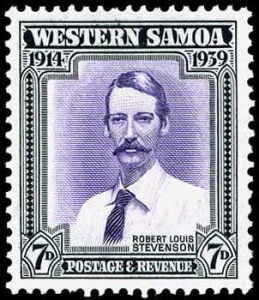 1894 – Robert Louis Stevenson, Scottish writer (b. 1850) died in Samoa.
1894 – Robert Louis Stevenson, Scottish writer (b. 1850) died in Samoa.
Western Samoa
1909 Macbeth (1909 French film), directed by André Calmettes
Scrooge McDuck recruits his nephews to search for a family treasure back in Dismal Downs, the old castle of The Clan McDuck, built in the middle of a swamp in Scotland. The treasure once belonged to Sir Quackly McDuck, but both the treasure and its owner disappeared during the siege of 1057. The Clan has been searching for centuries but Scrooge thinks that he can locate it thanks to an X-Ray machine that can look behind/through the castle’s walls. Wikipedia
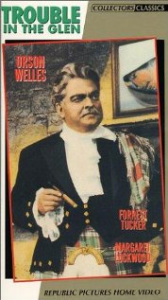 1954 Trouble in the Glen a former Air Force pilot who was stationed in Scotland during World War II, returns to Glasgow.
1954 Trouble in the Glen a former Air Force pilot who was stationed in Scotland during World War II, returns to Glasgow.
1960 Julianne Moore (born Julie Anne Smith; December 3, 1960) actress, mother is from Scotland. Julie’s mother, Anne McNeil McLean (née Love), was a psychiatrist and social worker who emigrated from Scotland to the United States as a child. Moore has a younger sister, Valerie, and a younger brother, 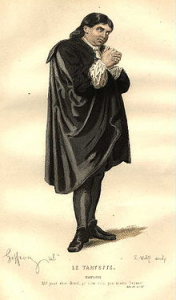 novelist Peter Moore Smith III. She is a dual citizen of Britain and America, by way of her Scottish ancestry. Moore applied for British citizenship in 2011 to honor her deceased mother (Moore has stated that “it would have meant the world to her”). While attending the Frankfurt American High School, she played in Tartuffe, a 1664 comedy by Moliere, Wikipedia.
novelist Peter Moore Smith III. She is a dual citizen of Britain and America, by way of her Scottish ancestry. Moore applied for British citizenship in 2011 to honor her deceased mother (Moore has stated that “it would have meant the world to her”). While attending the Frankfurt American High School, she played in Tartuffe, a 1664 comedy by Moliere, Wikipedia.
The Royal Lyceum Theatre in Edinburgh staged a Scots version by Liz Lochhead in 1987, which it revived on 7 January 2006.
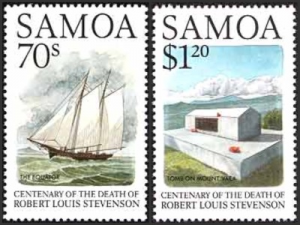 1994 www.scotiana.com. Equator, two masted schooner, built Benicia 1888, operated as South Seas Trader and mail boat by Wightman Brothers San Francisco. The Equator and British battleship Caliope were the only ships within a radius of 200 miles of Apia Samoa to ride out the great Samoan hurricane of March 1889. Equator was later chartered by Robert Louis Stevenson, sailed to the Gilbert Islands.
1994 www.scotiana.com. Equator, two masted schooner, built Benicia 1888, operated as South Seas Trader and mail boat by Wightman Brothers San Francisco. The Equator and British battleship Caliope were the only ships within a radius of 200 miles of Apia Samoa to ride out the great Samoan hurricane of March 1889. Equator was later chartered by Robert Louis Stevenson, sailed to the Gilbert Islands.
Samoa. Robert Louis Stevenson – (born Edinburgh) Centenary Death -Equator Sailing Ship and Tomb.
2012 humor back in the day of silver dimes and quarters. McLeod asked the conductor how much the bus fare into the city was. ” Fifteen cents, ” said the conductor. McLeod thought this was a bit much so he decided to run behind the bus for a few stops. ” How much is it now ? ” he gasped. ” Still fifteen cents, ” said the conductor. McLeod ran three further stops behind the bus and was barely able to ask the conductor again what the fare was now. ” Twenty cents, ” said the conductor. ” Ye’re running in the wrong direction.”
http://www.fife.50megs.com/scots-jokes2.htm
Disclaimer: The author of each article published on this web site owns his or her own words. The opinions, beliefs and viewpoints expressed by the various authors and forum participants on this site do not necessarily reflect the opinions, beliefs and viewpoints of Utah Standard News or official policies of the USN and may actually reflect positions that USN actively opposes. No claim in public domain or fair use. © John Choate
Utah Standard News depends on the support of readers like you.
Good Journalism requires time, expertise, passion and money. We know you appreciate the coverage here. Please help us to continue as an alternative news website by becoming a subscriber or making a donation. To learn more about our subscription options or make a donation, click here.
To Advertise on UtahStandardNews.com, please contact us at: ed@utahstandardnews.com.


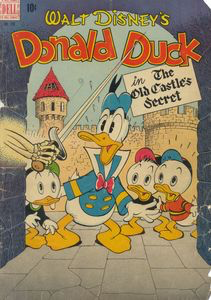
Comments - No Responses to “December 3rd Scots Book of Days 1318 Battle of Dundalk”
Sure is empty down here...